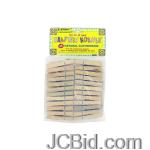
| Updated Blogs |
|
Computer Support Blog
Essensial Software for Web Based Support
HP Server and Desktop
HP ILO - Remote Tech-Support Software
More .....
|
 RSS Feed | Login
RSS Feed | Login harryjackson9
harryjackson9
Celiacs Disease - Causes and Treatment
By My Name at 2009-12-12 02:58:21
Celiac disease is a known disease of the small intestine. With celiac disease, the intestine experiences an immunological or allergic reaction. The small intestine does not absorb the nutrients of the food digested. This leads to nutritional, vitamin and mineral deficiencies. Diagnosing this disease early is very important to prevent any critical illness.
This disease is common in European countries, particularly in Ireland, Italy, Sweden and Austria. In Finland, the prevalence may be as high as one in every 100 persons. While in North America, its prevalence is one in every 3000 people. Worldwide, its occurrence would be one in every 250 people.
The disease can affect a person at any age. Children and adults alike have the chance to develop the disease. It is an autoimmune disorder which targets the digestive system. Like mentioned earlier, it is triggered by eating foods that are rich with gluten like cereal grains, bread, pasta, pizza crust, and even cookies. Any food that is made from wheat barley or rye most likely contains a good amount of gluten. When food with gluten is ingested, a reaction occurs in the small intestine which causes damage to its inner lining.
The small intestine also becomes incapable of absorbing nutrients. This, of course, will become problematic in the long run since the necessary nutrients are not absorbed which can result to other illnesses. The threat of nutrition deficiency is higher in children who have contracted the disease.
Celiac disease is a condition that affects the digestive system. It inhibits the absorption of nutrients into the body. Foods that are made from grains like wheat, rye and barley contain a protein called gluten. If you are afflicted with CD, every time you consume foods made using these grains it triggers a reaction in your small intestine.
This reaction damages the villi, which are tiny protrusions lining the small intestine. As a result the capacity of the small intestine to absorb nutrients is severely hampered. It has been found that CD and type 1 diabetes have certain genetic traits in common and there are more chances of type 1 diabetics having celiac disease and vice versa. It would be better if we are aware of vital signs of celiac disease with Type 1 diabetes and its effects.
Digestive symptoms of celiac disease candida are: vomiting, abdominal pain and bloating, weight loss, chronic diarrhea, constipation and pale, foul-smelling, or fatty stool.
Most likely digestive symptoms have children. Additionally, when nutrition is very important for children growth, malabsorption could raise other health problems as failure to thrive in infants, delayed growth, delayed puberty.
For adults digestive symptoms are less likely. Instead of digestive symptoms of celiac disease candida adults may have some of following: fatigue, arthritis, bone or joint pain, osteoporosis, unexplained iron-deficiency anemia, seizures, missed menstrual period, tingling numbness in the hands and feet, canker sores inside the mouth, itchy skin rash called dermatitis herpetiformis.
The ideal diet for celiac disease is a gluten free diet. In fact the only treatment for celiac diseases is to follow a diet that is free from gluten. This requires the diet to be free from wheat, barley, oats, and rye. Most celiac patients have to avoid gluten completely while some can include small traces occasionally.
The ideal gluten free diet for celiac disease patients reduces the symptoms of intestinal damage. It can take up to 3 - 6 months to heal the small intestine and over 2 years to heal an older celiac patient. A small number of patients never heal because of severe damage that has been caused to the intestine. This causes the intestine to become unresponsive to all changes including elimination of gluten.
Read about Reduce Cholesterol and also read about Controlling Cholesterol and Guggul
Permalink | Comments (0)
Comments
To add a comment please login by clicking here
JC Store | JasmineCorp
|
JCBid
|Software
Development |
Domain
Registration | Hosting
| Web
Designing | Buy
Books |
Advertise
with JCSearch |
Whois
|
IP
Locator |
Add
Search |
Shopping
| Store
|
Free Blogs |
Free
GuestBook | Free
E-Cards |
Free
Games |
Free
Tutorials |
Set
as Home | Add
to Favorite
| Suggest
a Site |
Directory
Our Portfolio
| Terms of service
| Free quote
| Tell a Friend
| Special Offer
| Job Opportunities
| games
| Usenet Groups




